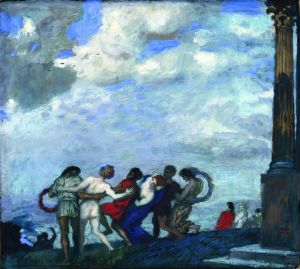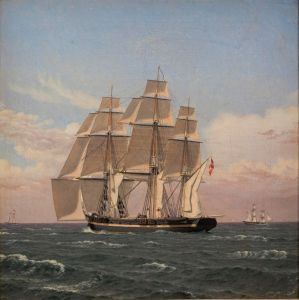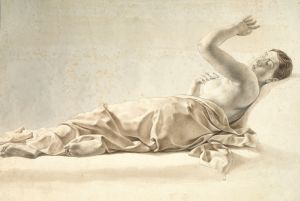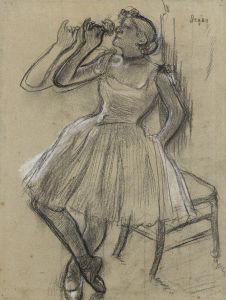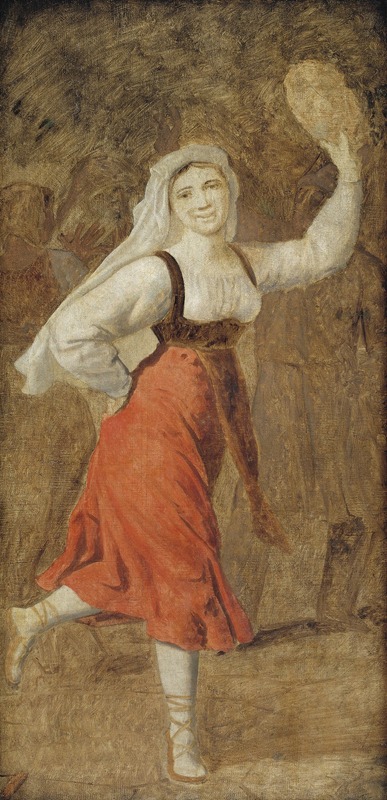
A Dancing Italian Girl
A hand-painted replica of Christoffer Wilhelm Eckersberg’s masterpiece A Dancing Italian Girl, meticulously crafted by professional artists to capture the true essence of the original. Each piece is created with museum-quality canvas and rare mineral pigments, carefully painted by experienced artists with delicate brushstrokes and rich, layered colors to perfectly recreate the texture of the original artwork. Unlike machine-printed reproductions, this hand-painted version brings the painting to life, infused with the artist’s emotions and skill in every stroke. Whether for personal collection or home decoration, it instantly elevates the artistic atmosphere of any space.
"A Dancing Italian Girl" is a painting by the Danish artist Christoffer Wilhelm Eckersberg, completed in 1816. Eckersberg, often referred to as the "father of Danish painting," was a pivotal figure in the Danish Golden Age of painting. He is renowned for his precise and detailed style, which was influenced by his studies in Paris under Jacques-Louis David and his subsequent travels in Italy.
The painting depicts a young Italian girl dancing, capturing a moment of lively movement and cultural expression. The girl is dressed in traditional Italian attire, which includes a white blouse, a red skirt, and a green sash, reflecting the colors of the Italian flag. Her attire and the setting suggest a scene from everyday life, emphasizing Eckersberg's interest in realism and his ability to capture the essence of his subjects.
Eckersberg painted "A Dancing Italian Girl" during his stay in Rome, where he lived from 1813 to 1816. This period was crucial for his artistic development, as he was deeply influenced by the classical art and architecture of the city. The painting reflects his fascination with Italian culture and his skill in portraying human figures with grace and accuracy.
The composition of the painting is carefully balanced, with the dancer positioned slightly off-center, creating a dynamic sense of movement. The background is relatively simple, ensuring that the viewer's attention remains focused on the girl. Eckersberg's use of light and shadow adds depth to the painting, highlighting the contours of the girl's figure and the folds of her clothing.
"A Dancing Italian Girl" is an excellent example of Eckersberg's ability to combine technical precision with a sense of warmth and vitality. His meticulous attention to detail is evident in the delicate rendering of the girl's features and the texture of her clothing. At the same time, the painting exudes a sense of spontaneity and joy, capturing a fleeting moment of dance.
The painting is part of the collection at the Statens Museum for Kunst (National Gallery of Denmark) in Copenhagen. It is considered one of Eckersberg's masterpieces and a significant work in the context of Danish art history. The painting not only showcases Eckersberg's technical prowess but also his ability to convey the spirit of a different culture through his art.
Eckersberg's influence on Danish art was profound, and his works continue to be celebrated for their clarity, precision, and emotional depth. "A Dancing Italian Girl" remains a testament to his skill as an artist and his deep appreciation for the beauty of everyday life.






